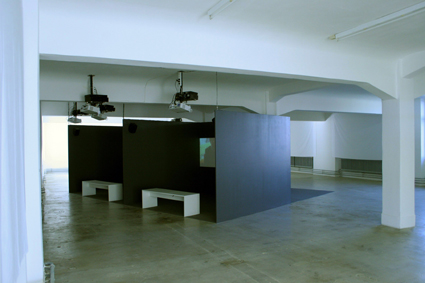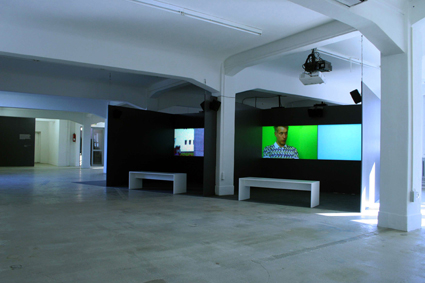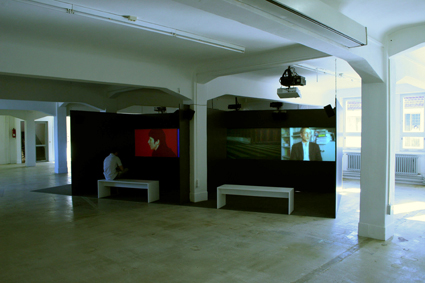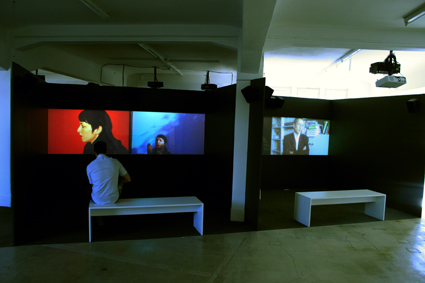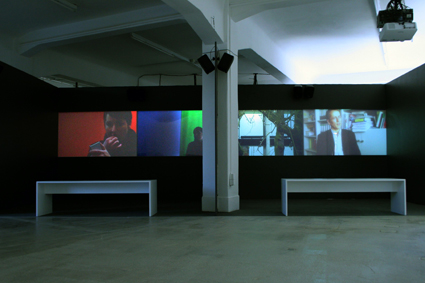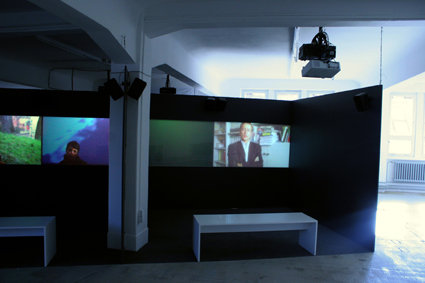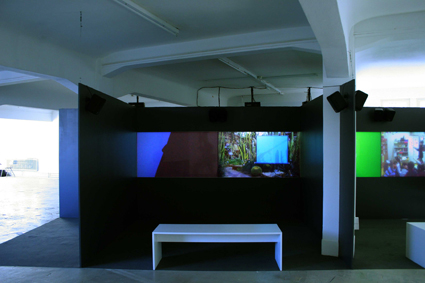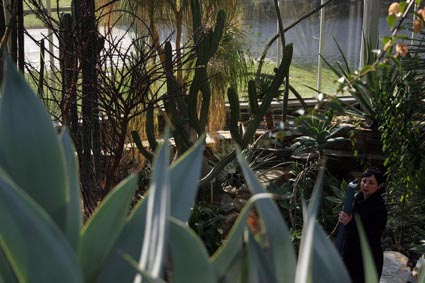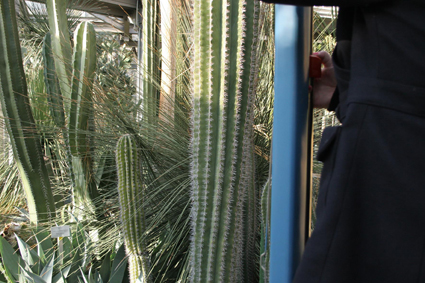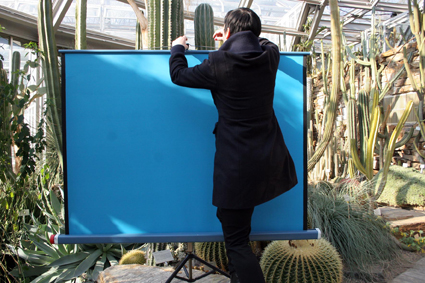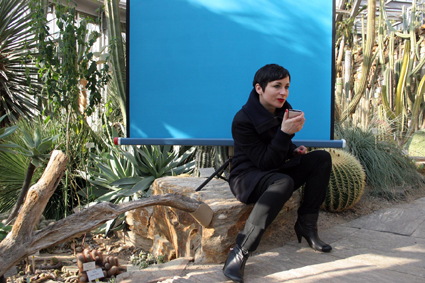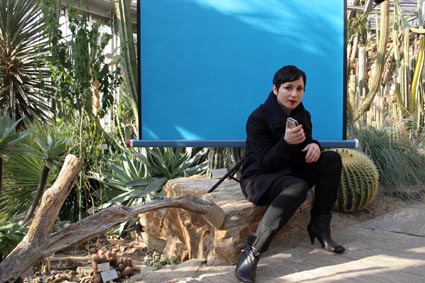| Katya Sander | e@katyasander.net |
| Production of Futures. A Science Fiction about Counting. 2008 Produced for solo-show at Künstlerhaus Stuttgart, curated by Axel Wieder A large-scale, 5-channel video- and architecture installation, which thematically examines the production of conceptions of “futures” (1). 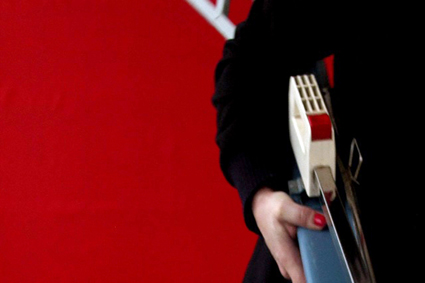 The work in the exhibition Production of Futures begins with questioning how futures are calculated and described through mathematics and economy and what influence these projections have on the present. The word “futures” is used in a double sense. In finance, “Futures” or “futures contract” is a finacial instrument, a specific kind of standardized contract used for buying or selling a specified commodity – which, in most cases, are non-traditional “commodities” such as foreign currencies, commercial or government paper (e.g., bonds) – at a specific date in the future at a price specified today. Futures traders are normally either hedgers, who have an interest in the underlying commodity and are seeking to hedge out the risk of price changes; and speculators, who seek to make a profit by predicting market moves and buying a commodity “on paper” for which they have no practical use. The social utility of futures markets is considered to be mainly in the transfer of risk. Futures are a kind of derivatives. Derivatives make up more than 99% of global financial trade. In five parallel video projections, interviews with scientists and practitioners from the fields of demography, stochastic, scientific history and the financial and insurance industries are montaged with images of an actress, who is on a trip through various constructed landscapes. She carried a monochrome screen, which she rolls out and places in the different landscapes. The colors of the screen varies. She asks questions and records them on a small hand-held recorder. She addresses the camera as well as interviewees. Formally the scenes use the presence of a “blue-screen”; a traditional filmic technique which allows foreground and background to not take place at the same time, but be put together retrospectively, thereby creating the illusion of seamless shifts between spaces, scales and perspectives that would not be possible otherwise. Normally the blue-screen is not supposed to be visible as such, but only to establish relations. Here, however, the blue-screen has become a literal object itself; an analogue, low-tech versions of a blue-screen, carried around and rolled out in different landscapes. Like in the film-industry, the "blue"-screen is not necessarily always blue, but can have different colors depending on the background-foreground relationship.. The female figure who ties together the material across the 5 screens (played by actress Susanne Sachsse) is on an investigation. At the end, there is no conclusion, but rather lines drawn between references and narratives developing and directing our ideas about the future. Installation: The installation consists of 5 single-channel videos, projected next to each other along a “spine”; a central wall, which is partitioned into smaller viewing booths on each side. The videos are visible from both front and back. They are projected onto a Plexiglas window covered with opaque projection foil (the kind that allows the projection to be seen from both sides). 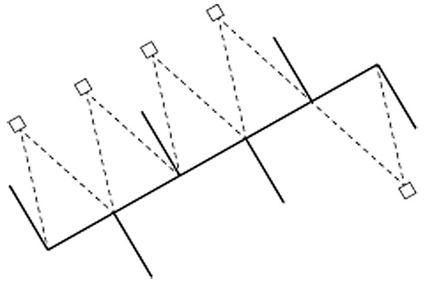 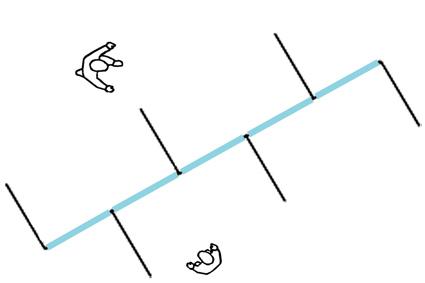 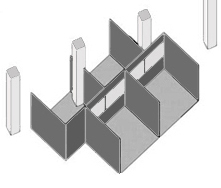
|

